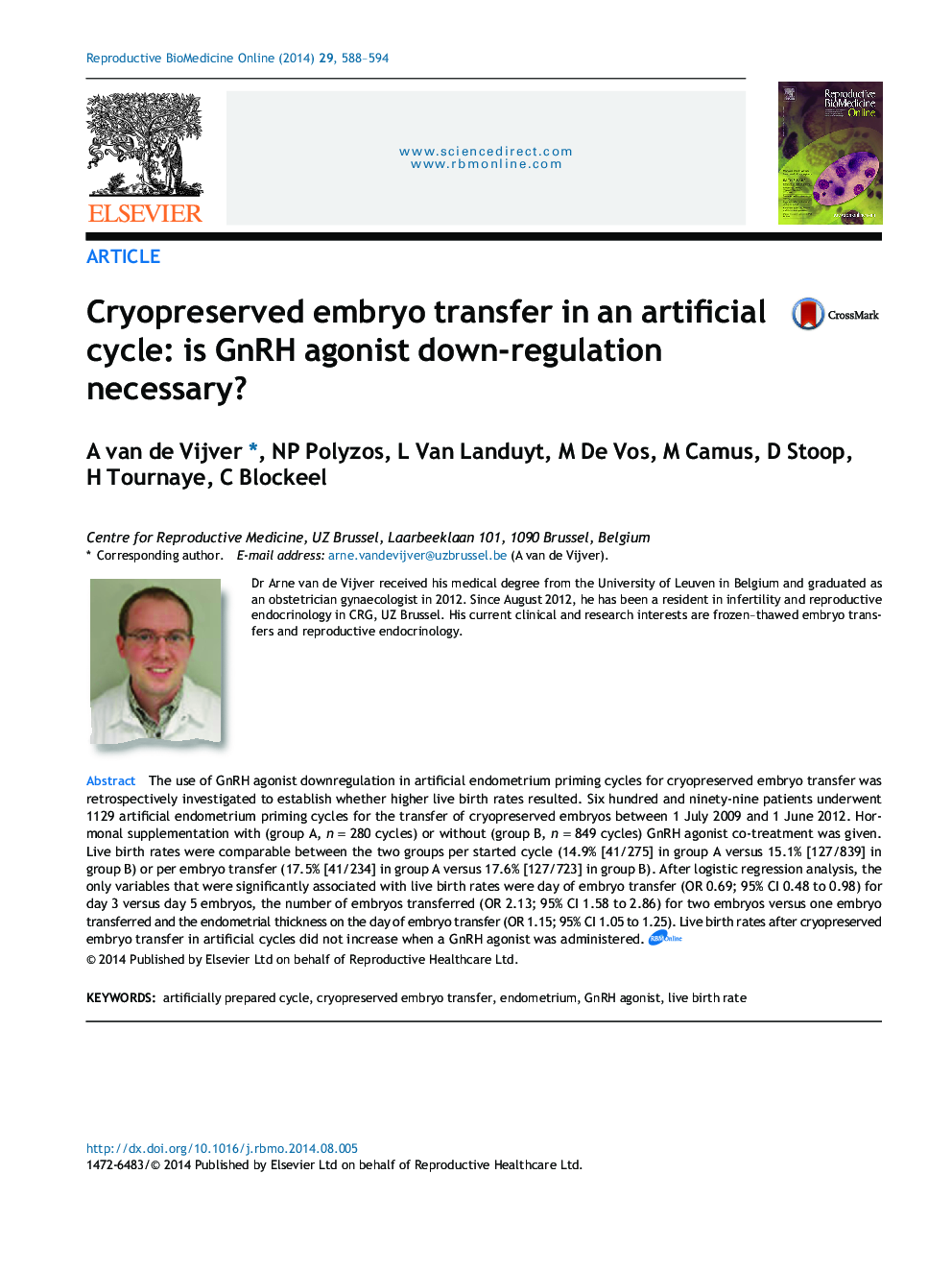| Article ID | Journal | Published Year | Pages | File Type |
|---|---|---|---|---|
| 6188996 | Reproductive BioMedicine Online | 2014 | 7 Pages |
â¢GnRH agonist is often used in endometrial preparation for cryopreserved embryo transfer.â¢We retrospectively analysed 1129 patients.â¢Live birth rates do not increase when a GnRH agonist is administered.
The use of GnRH agonist downregulation in artificial endometrium priming cycles for cryopreserved embryo transfer was retrospectively investigated to establish whether higher live birth rates resulted. Six hundred and ninety-nine patients underwent 1129 artificial endometrium priming cycles for the transfer of cryopreserved embryos between 1 July 2009 and 1 June 2012. Hormonal supplementation with (group A, n = 280 cycles) or without (group B, n = 849 cycles) GnRH agonist co-treatment was given. Live birth rates were comparable between the two groups per started cycle (14.9% [41/275] in group A versus 15.1% [127/839] in group B) or per embryo transfer (17.5% [41/234] in group A versus 17.6% [127/723] in group B). After logistic regression analysis, the only variables that were significantly associated with live birth rates were day of embryo transfer (OR 0.69; 95% CI 0.48 to 0.98) for day 3 versus day 5 embryos, the number of embryos transferred (OR 2.13; 95% CI 1.58 to 2.86) for two embryos versus one embryo transferred and the endometrial thickness on the day of embryo transfer (OR 1.15; 95% CI 1.05 to 1.25). Live birth rates after cryopreserved embryo transfer in artificial cycles did not increase when a GnRH agonist was administered.
